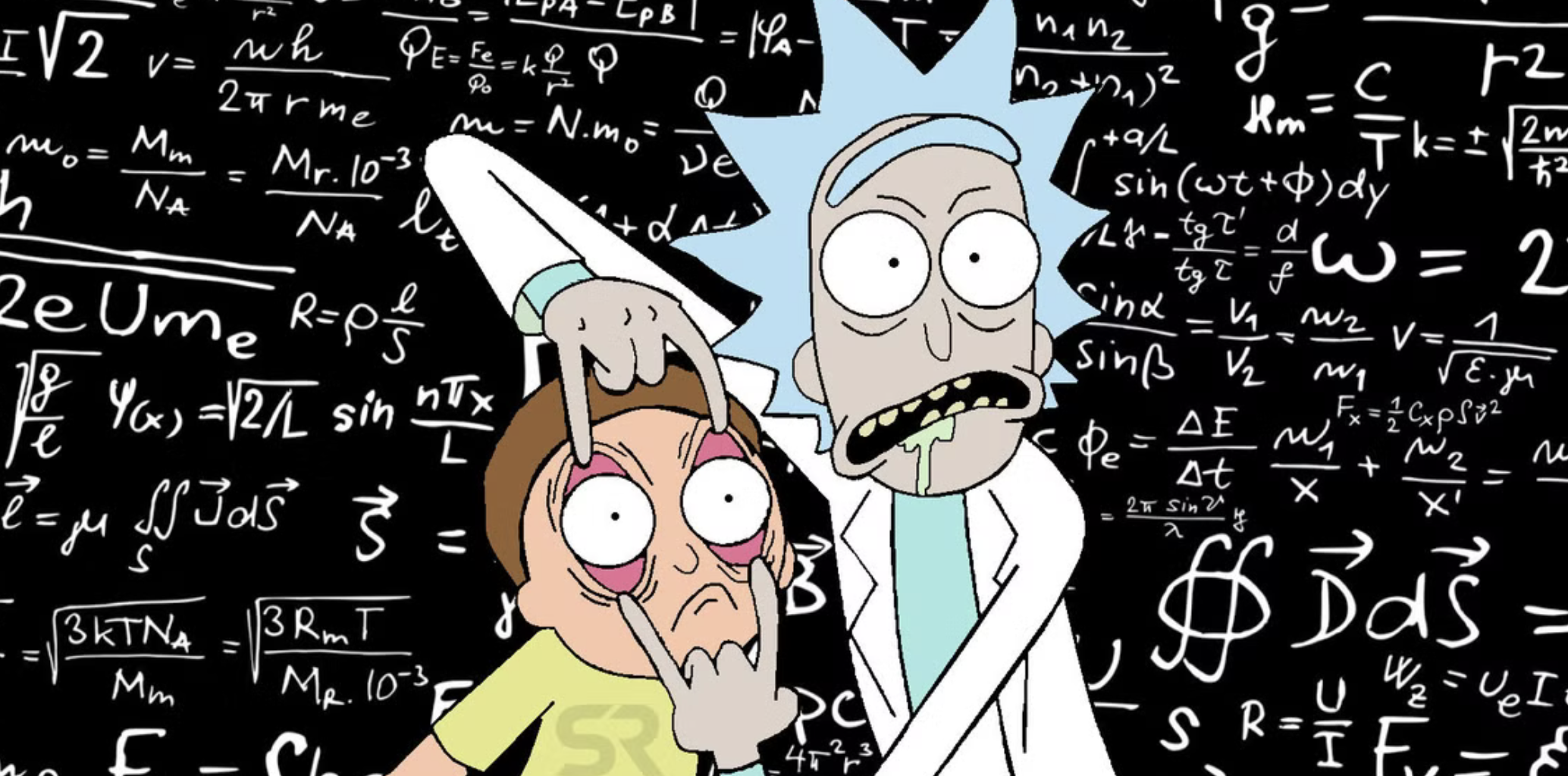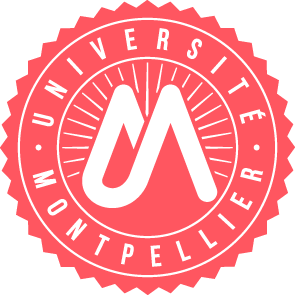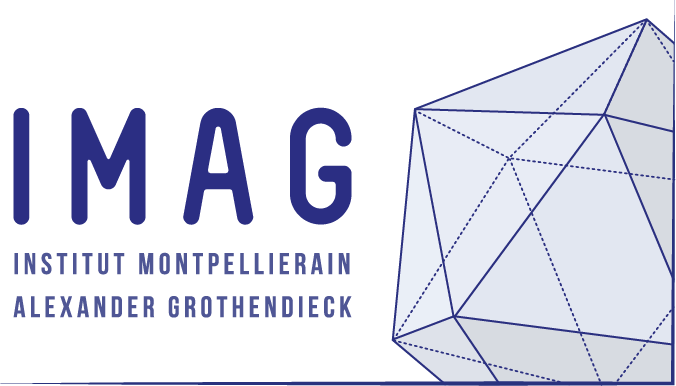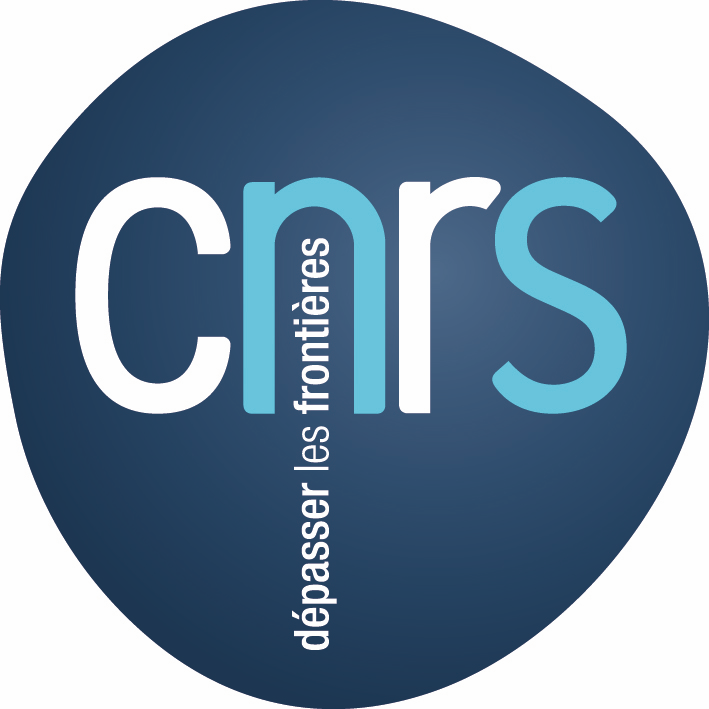Fabien Marche - Research

interests: modeling, pde's, numerical analysis, scientific computing
modeling and mathématical analysis:
non-linear conservation laws, free-boundary value problems, asymptotic modeling, dispersive waves equations and solitary waves, Cahn-Hilliard equations, relaxation models, multiscale problems, models coupling…
numerical analysis:
Finite Volume methods, Finite-Elements and discontinuous-Galerkin methods, Hybridized Discontinuous Galerkin (HDG) and Hybrid High-Order methods (HHO), FV-subcells methods, well-balancing, dispersion-preserving, relaxation schemes, asymptotic-preserving …
scientific computing:
object oriented and generic programming for scientific computing, parallel and heterogeneous programming, graphics processing unit (GPU) programming, ... …
research projects / fundings (member or PI)
ANR BOURGEONS: investigate several aspects of fluid dynamics which all play an important role in geophysical flows and their environmental applicationsCNRS-INSU LEFE MANU: UHAINA: un modèle communautaire pour la simulation des vagues extrêmes (appel à projet LEFE-MANU - 2017-2018)
ANR NABUCO: NumericAl BoUndaries and COupling
ANR HHOMM: Hybrid High-Order Methods on polyhedral Meshes
MERIC / CIGIDEN: Marine Energy Research and Innovation Center
ANR ACHYLLES: Asymptotic Capturing for HYperbolic conservation Laws with LargE Source terms
ANR BoND: Boundaries, numerics and Dispersion
CNRS-INSU LEFE-MANU SoLi: Singularités en Océanographie LIttorale (2013-2015)
Project Phi-0 with Saint-Gobain SVI: Résolution numérique d’écoulements dominés par la capillarité à l’aide de méthodes de discrétisation hybrides d’ordre élevé (2015-2016)
JOHANNA: vers une prédiction des coûts des dommages liés aux submersions marines et aux vagues lors des tempêtes (with the BRGM, UBO and the Fundation MAIF)
Simulation de la montée des eaux à Gâvres effectuée avec le logiciel SURF-WB
ANR MATHOCEAN: Analyse mathématique en océanographie et applications
ANR MISEEVA: Marine Inundation hazard exposure modelling and Social, Economic and Environmental Vulnerability Assessment in regard to global changes. (ANR VMC 2007)
PRECODD Europe AMPERA ERA-NET: OILDEBEACH: Buried oil in the intertidal beach zone: coupling between morphodynamics, natural degradation, forcing mechanisms and biological activity - 2009-2011.
Publications
peer-reviewed articles
-
A.Haidar, F.Marche, F. Vilar
[journal]
An ALE numerical method for the waterline evolution of a floating object with non-linear shallow-water equations.
J. Sci. Comput. , volume xx, article number xx, 2025.
-
A.G. Filippini, L. Arpia, V. Perrier, R. Pedreros, P. Bonneton, D. Lannes, F. Marche, S. de Brye, S. Delmas, F. Boulahya, M. Ricchiuto
[journal]
An operational discontinuous Galerkin shallow water model for coastal flood assessment.
Ocean Modelling , volume 192, 2024.
-
A.Haidar, F.Marche, F. Vilar
[HAL]
Free-boundary problems for wave-structure interactions in shallow-water: DG-ALE description and local subcell correction.
J. Sci. Comput. , volume 98, article number 45, 2024.
-
F. Marche, M. Zefzouf
[HAL]
A new Symmetric Internal Penalty Discontinuous Galerkin formulation for the Serre-Green-Naghdi equations.
Numerical Methods for Partial Differential Equations, volume 39, issue 2, pages 1478-1503, 2023.
-
A.Haidar, F.Marche, F. Vilar
[HAL]
A posteriori Finite-Volume local subcell correction of high-order discontinuous Galerkin schemes for the nonlinear shallow-water equations.
J. Comput. Phys. , volume 452, pages 110902, 2022.
-
F.Marche
[HAL]
A combined Hybridized Discontinuous Galerkin (HDG) and Discontinuous Galerkin (DG) discrete formulation for Green-Naghdi equations on unstructured meshes.
J. Comput. Phys. , volume 418, pages 109637, 2020.
-
D.A.Di Pietro, F.Marche
[HAL]
Weighted Interior Penalty discretization of fully nonlinear and weakly dispersive free surface shallow water flows .
J. Comput. Phys. , volume 355, pages 285-309, 2018.
-
A.Duran, F.Marche
[HAL]
Discontinuous Galerkin discretization of Green-Naghdi equations on unstructured simplicial meshes.
Applied Mathematical Modelling , volume 45, pages 840-864, 2017.
-
F.Chave, D.A.Di Pietro, F.Marche, F.Pigeonneau
[HAL]
A Hybrid High-Order method for the Cahn–Hilliard problem in mixed form.
SIAM J. Numer. Anal. , volume 54(3), pages 1873-1898, 2016.
-
D.Lannes, F.Marche
[HAL]
Nonlinear wave-current interactions in shallow water.
Studies in Applied Math., volume 136(4), pages 382–423, 2016.
Special distinction: Highlights of the year 2016 (four papers out of all those published by this journal in 2016 were selected as “Highlights of the Year” for their novelty, quality and importance)
-
A.Duran, C.Berthon, F.Marche, R.Turpault
[journal]
Asymptotic Preserving Scheme for the Shallow Water equations with source terms on unstructured meshes.
J. Comput. Phys., volume 287, pages 184–206, 2015.
-
D.Lannes, F.Marche
[journal]
A new class of fully nonlinear and weakly dispersive Green-Naghdi models for efficient 2D simulations.
J. Comput. Phys., volume 282, pages 238–268, 2015.
-
A.Duran, F.Marche
[journal]
Discontinuous-Galerkin discretization of a new class of Green-Naghdi equations.
Comm. Comput. Phys., volume 17(3), pages 721-760, 2015.
-
S.Le Roy, R.Pedreros, C.André, F.Paris, S.Lecacheux, F.Marche,C.Vinchon
[journal]
Coastal flooding of urban areas by overtopping: dynamic modelling application to the Johanna storm (2008) in Gâvres (France).
Natural Hazards and Earth System Sciences, volume 15, pages 2497-2510, 2015.
-
A.Duran, F.Marche
[journal]
Recent advances on the discontinuous Galerkin method for shallow water equations with topography source terms.
Computers & Fluids, volume 101, pages 88–104, 2014.
-
M.Guerra, R.Cienfuegos, C.Escauriaza, F.Marche, J.Galaz
[journal]
Modeling Rapid Flood Propagation Over Natural Terrains Using a Well-Balanced Scheme.
J. Hydraul. Eng., volume 140(7), 2014.
-
A.Duran, Q.Liang, F.Marche
[journal]
On the well-balanced numerical discretization of shallow water equations on unstructured meshes.
J. Comput. Phys., volume 235, pages 565--586, 2013.
-
M.Tissier, P.Bonneton, F.Marche, F.Chazel, D.Lannes
[journal]
A new approach to handle wave breaking in fully non-linear Boussinesq models.
Coastal Engineering, volume 67, pages 54--66, 2012.
-
P.Bonneton, E. Barthelemy, F.Chazel, R.Cienfuegos, D.Lannes, F.Marche, M.Tissier
[journal]
Recent advances in Serre-Green-Naghdi modelling for wave transformation, breaking and runup processes.
Eur. J. Mech. B Fluids, volume 30(6), pages 589–597, 2011.
-
M.Tissier, P.Bonneton, F.Marche, F.Chazel, D.Lannes
[journal]
Nearshore Dynamics of Tsunami-like Undular Bores using a Fully Nonlinear Boussinesq Model.
J. Coastal. Res., SI 64, pages 603-607, 2011.
-
C.Berthon, F.Marche, R.Turpault
[journal]
An efficient scheme on wet/dry transitions for shallow water equations with friction.
Computers & Fluids, volume 48(1), pages 192 - 201, 2011.
-
P.Bonneton, F. Chazel, D.Lannes, F.Marche, M.Tissier
[journal]
A splitting approach for the fully nonlinear and weakly dispersive Green-Naghdi model.
J. Comput. Phys., volume 230(4), pages 1479 - 1498, 2011.
-
F. Chazel, D.Lannes, F.Marche.
[journal]
Numerical simulation of strongly nonlinear and dispersive waves using a Green-Naghdi model.
J. Sci. Comput., volume 48(3), pages 105-116, 2011.
-
A. Bouharguane, P.Azerad, F.Bouchette, F.Marche, B.Mohammadi.
[journal]
Low complexity shape optimization & a posteriori high fidelity validation.
Discrete Contin. Dyn. Syst. Ser. B., volume 13(4), pages 759-772, 2010.
-
O.Delestre, F.Marche.
[journal]
A numerical scheme for a viscous shallow water model with friction.
J. Sci. Comput., volume 48(1), pages 41--51, 2011.
-
P.Bonneton, N.Bruneau, B.Castelle, F.Marche
[journal]
Large-Scale vorticity generation due to dissipating waves in the surf zone.
Discrete Contin. Dyn. Syst. Ser. B., volume 13(4), pages 729-738, 2010.
-
Q.Liang, F.Marche
[journal]
Numerical resolution of well-balanced shallow water equations with complex source terms.
Adv. Water Res., volume 32(6), pages 873-884, 2009.
-
P.Fabrie, F.Marche
[journal]
Another Proof of Stability for Global Weak Solutions of 2D Degenerated Shallow Water Models.
J. Math. Fluid Mech., volume 11(4), pages 536-551, 2009.
-
C.Berthon, F.Marche
[journal]
A positive preserving high order VFRoe scheme for shallow water equations: a class of relaxation schemes.
SIAM J. Sci. Comput., volume 30(5), pages 2587-2612, 2008.
-
F.Marche
[journal]
Derivation of a new two-dimensional viscous shallow water model with varying topography, bottom friction and capillary effects.
Eur. J. Mech. B Fluids, volume 26(1), pages 49-63, 2007.
-
F. Marche, P. Bonneton, P. Fabrie, N. Seguin
[journal]
Evaluation of well-balanced bore-capturing schemes for 2D wetting and drying processes.
International Journal for Numerical Methods in Fluids, volume 53(5), pages 867-894, 2007.
Book chapters and reviewed "in proceedings" papers
-
Filippini A.G., de Brye S., Perrier V., Marche F., Ricchiuto M., Lannes, D., Bonneton, P.
[HAL]
UHAINA: A parallel high performance unstructured near-shore wave model.
XVie Journées Nationales Génie Côtier-Géne Civil , pages 47-56, Paralia, 2018.
-
F.Chave, D.A.Di Pietro, F.Marche
[arxiv]
A Hybrid High-Order method for the convective Cahn-Hilliard problem in mixed form.
Finite Volumes for Complex Applications VIII - Hyperbolic, Elliptic and Parabolic Problems, pages 517-525, Springer, 2018.
Habilitation à diriger des recherches
-
H.D.R. defended on December, 2014, Université de Montpellier
Contributions to the numerical approximation of shallow water asymptotics
PhD Thesis
-
Ph.D. thesis advised by Pierre Fabrie and Philippe Bonneton defended on December, 2005, Université de Bordeaux
Theoretical and Numerical Study of Shallow Water Models. Applications to Nearshore Hydrodynamics
Ph.D. supervising
- Ph.D. thesis of Sacha Cardonna (2023–2026) (IMAG, Université de Montpellier)
to be precised in 2026 - Ph.D. thesis of Ali Haidar (2019–2022) (IMAG, Université de Montpellier)
Simulation numérique des interactions non linéaires en eau peu profonde entre les ondes de surface et une structure flottante - Ph.D. thesis of Meriem Zefzouf (2018–2021) (IMAG, Université de Montpellier)
Etude numérique de modèles dispersifs en eaux peu profondes - Ph.D. thesis of Arnaud Duran (2011–2014) (I3M, Université Montpellier 2)
Numerical simulation of depth-averaged flow models : a class of Finite Volume and discontinuous Galerkin approaches. - Ph.D. thesis of Mathieu Cathala (2010–2013)
Problématiques d'analyse numérique et de modélisation pour écoulements de fluides environnementaux - Ph.D. thesis of Marion Tissier (2008–2011)
Etude numérique de la transformation des vagues en zone littorale, de la zone de levée aux zones de surf et de jet de rive



